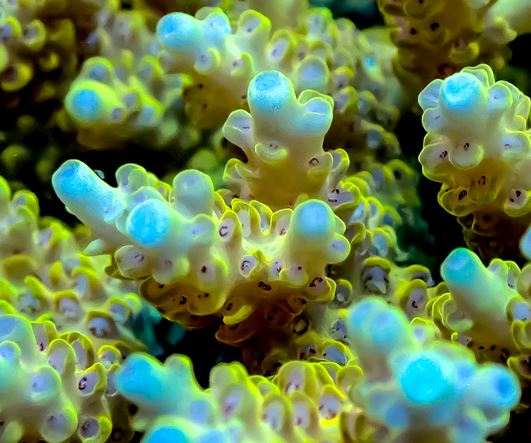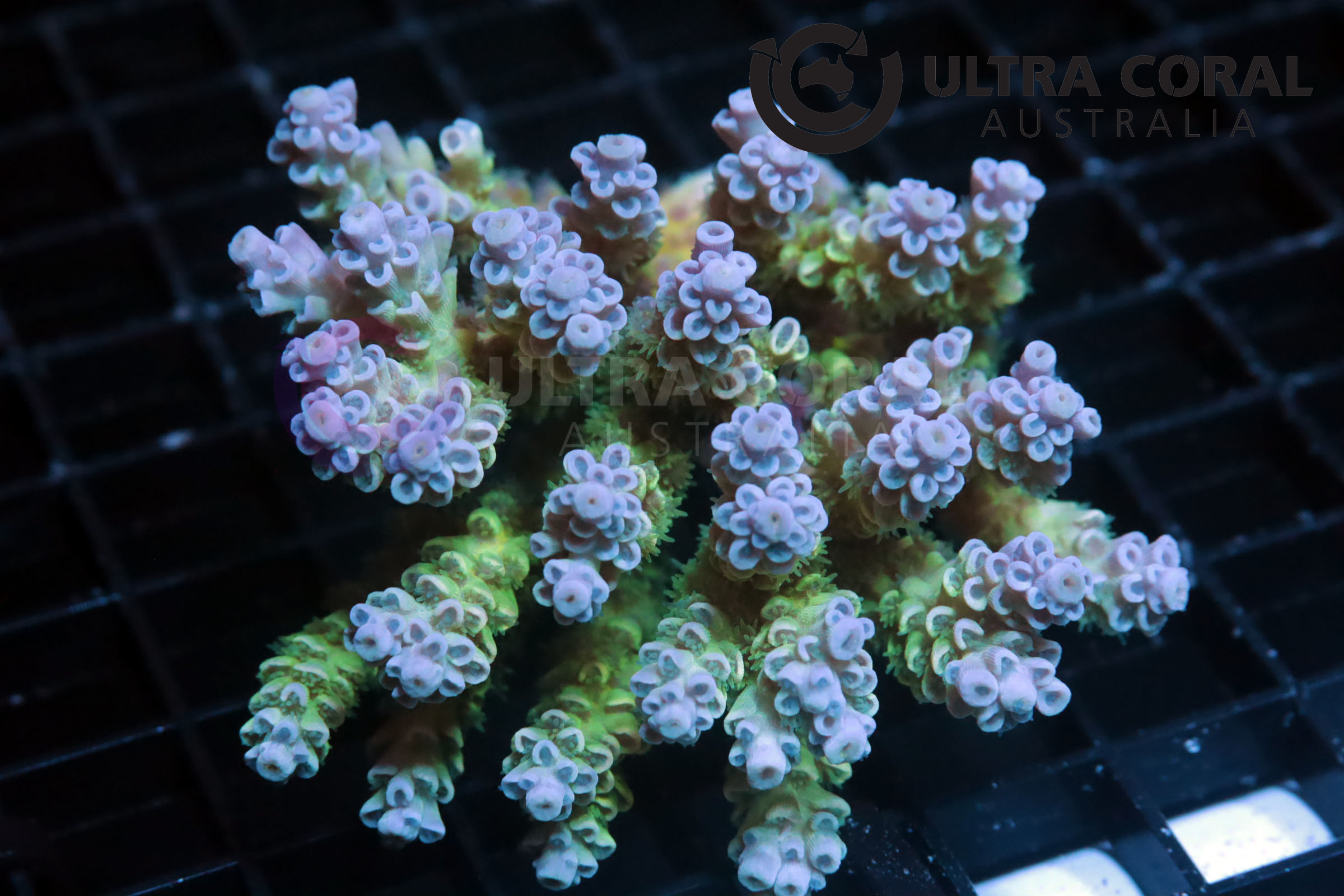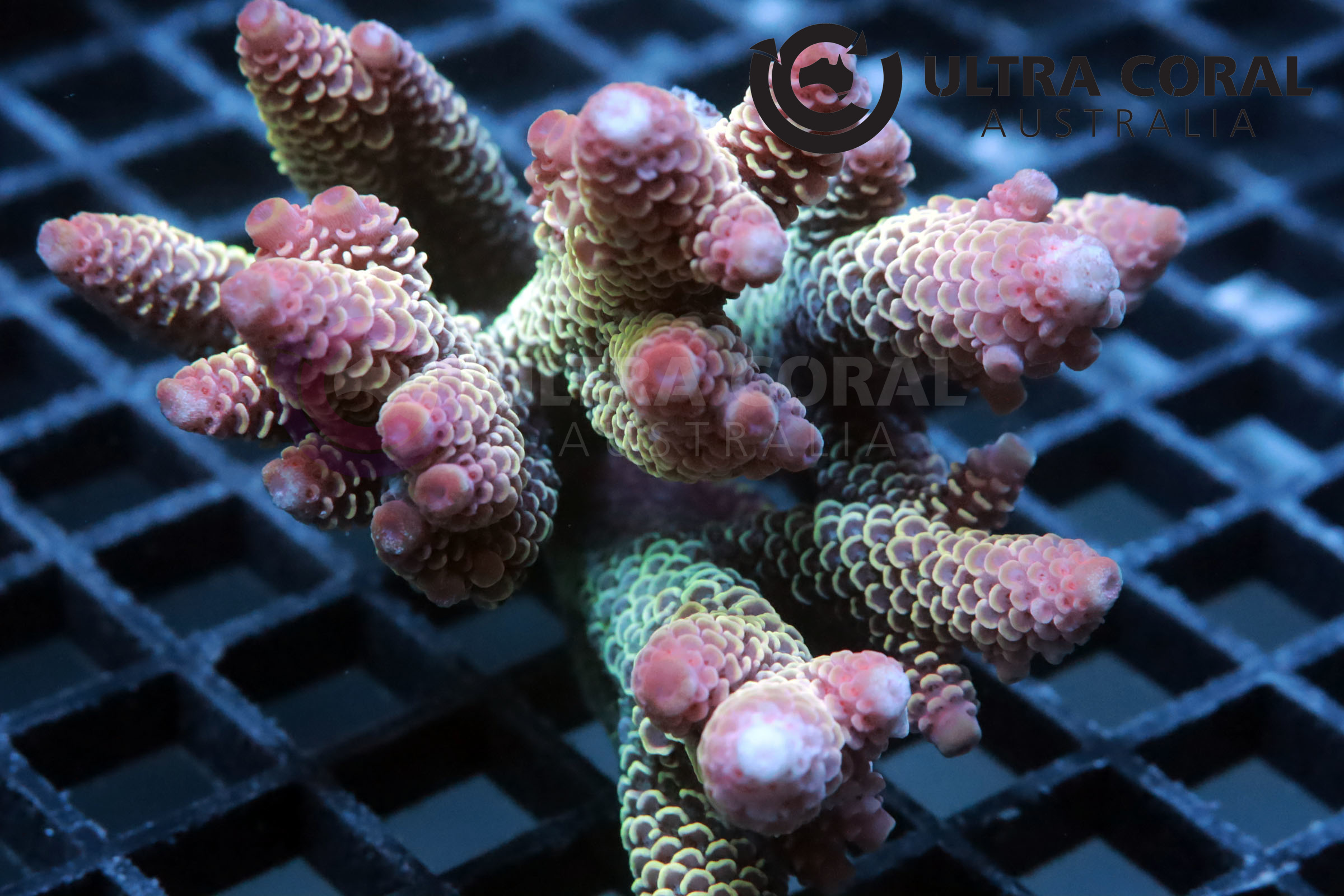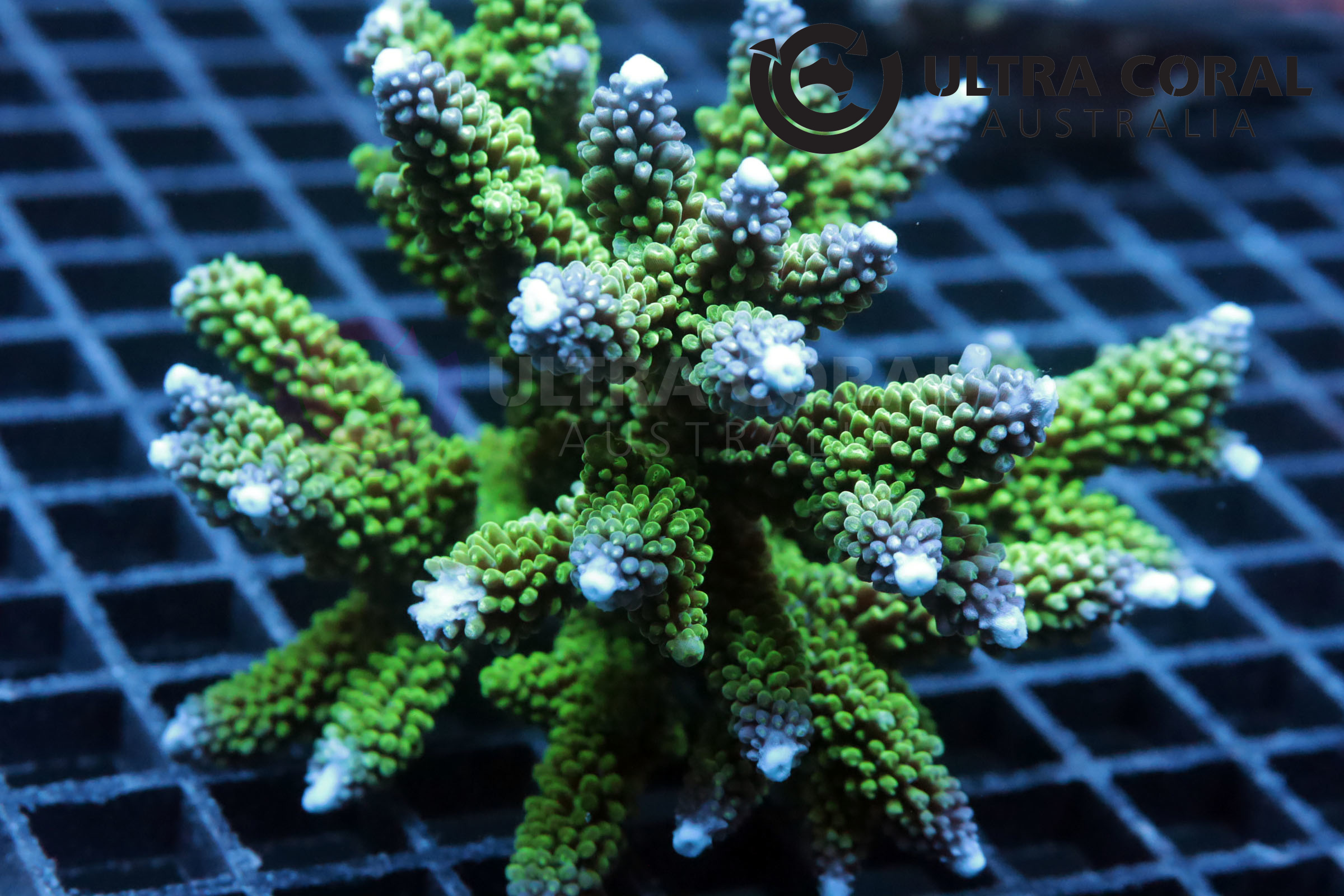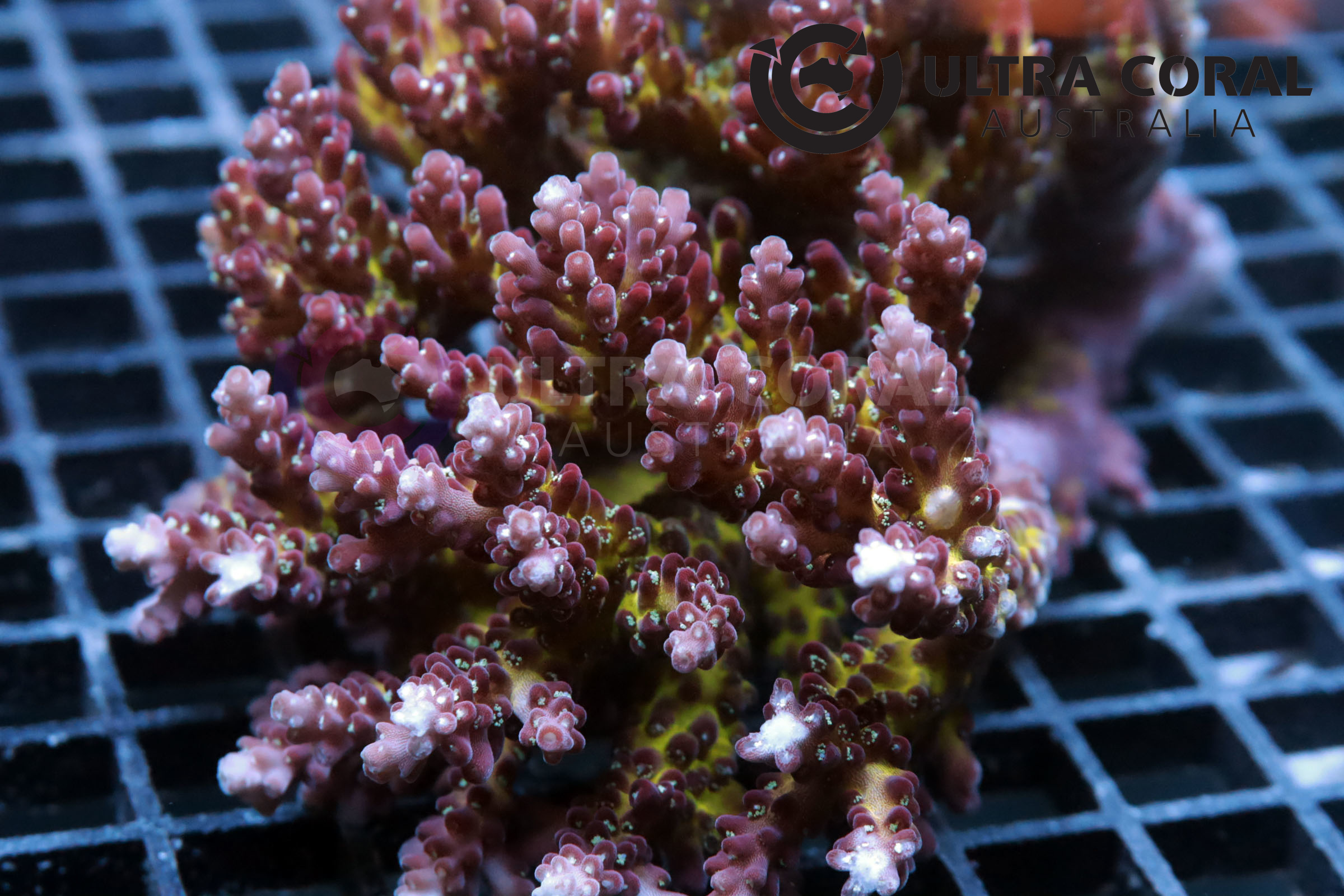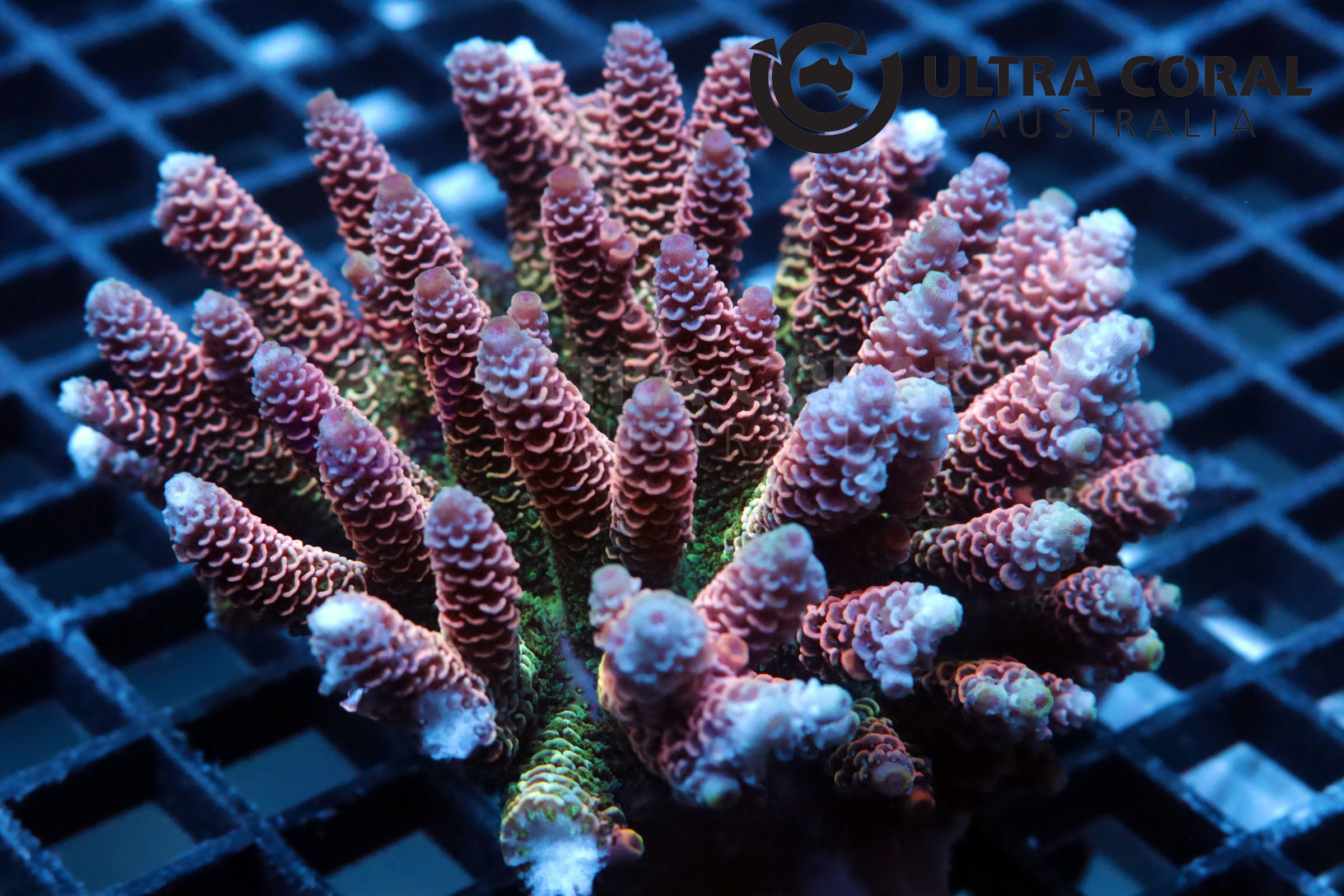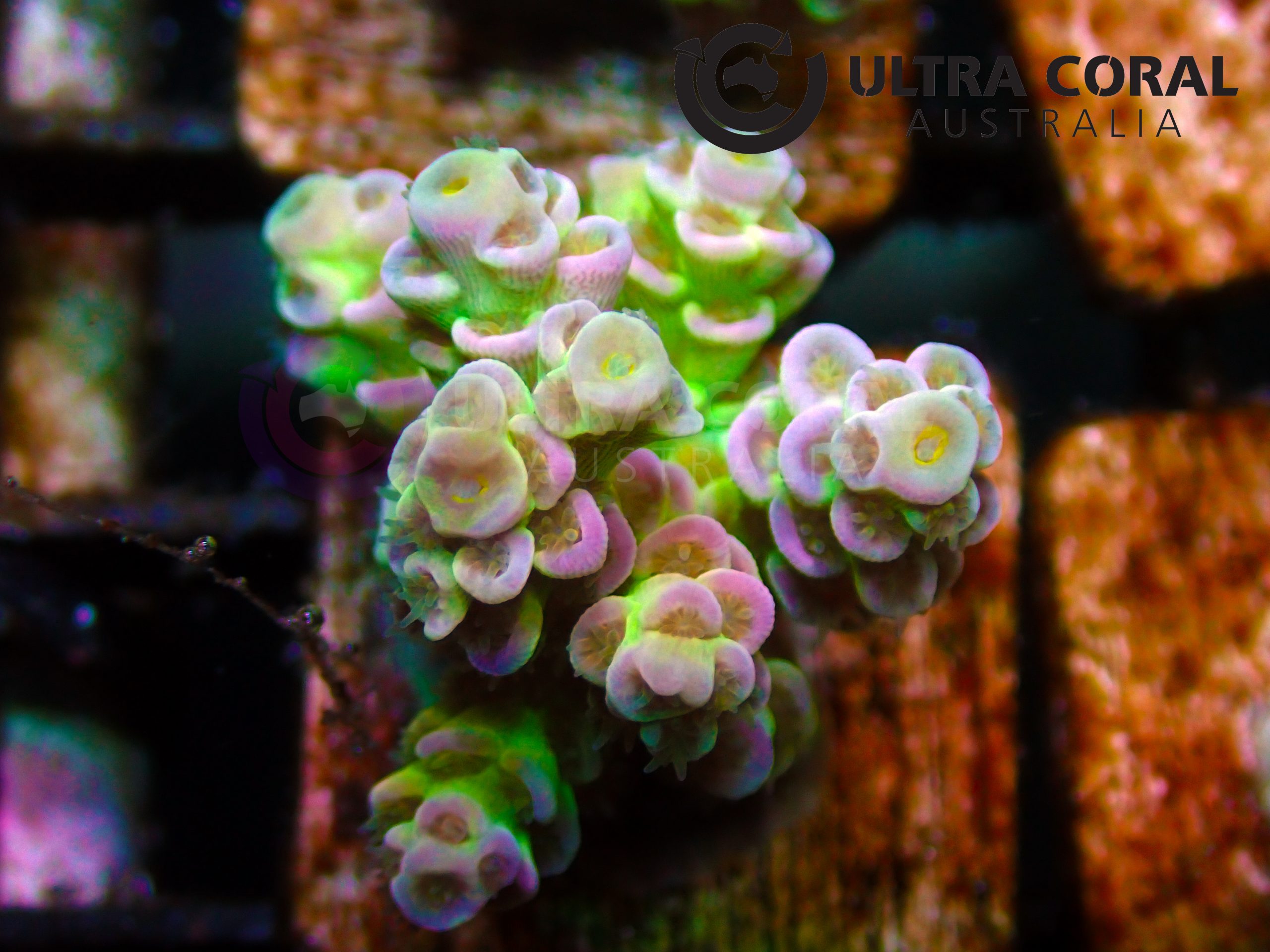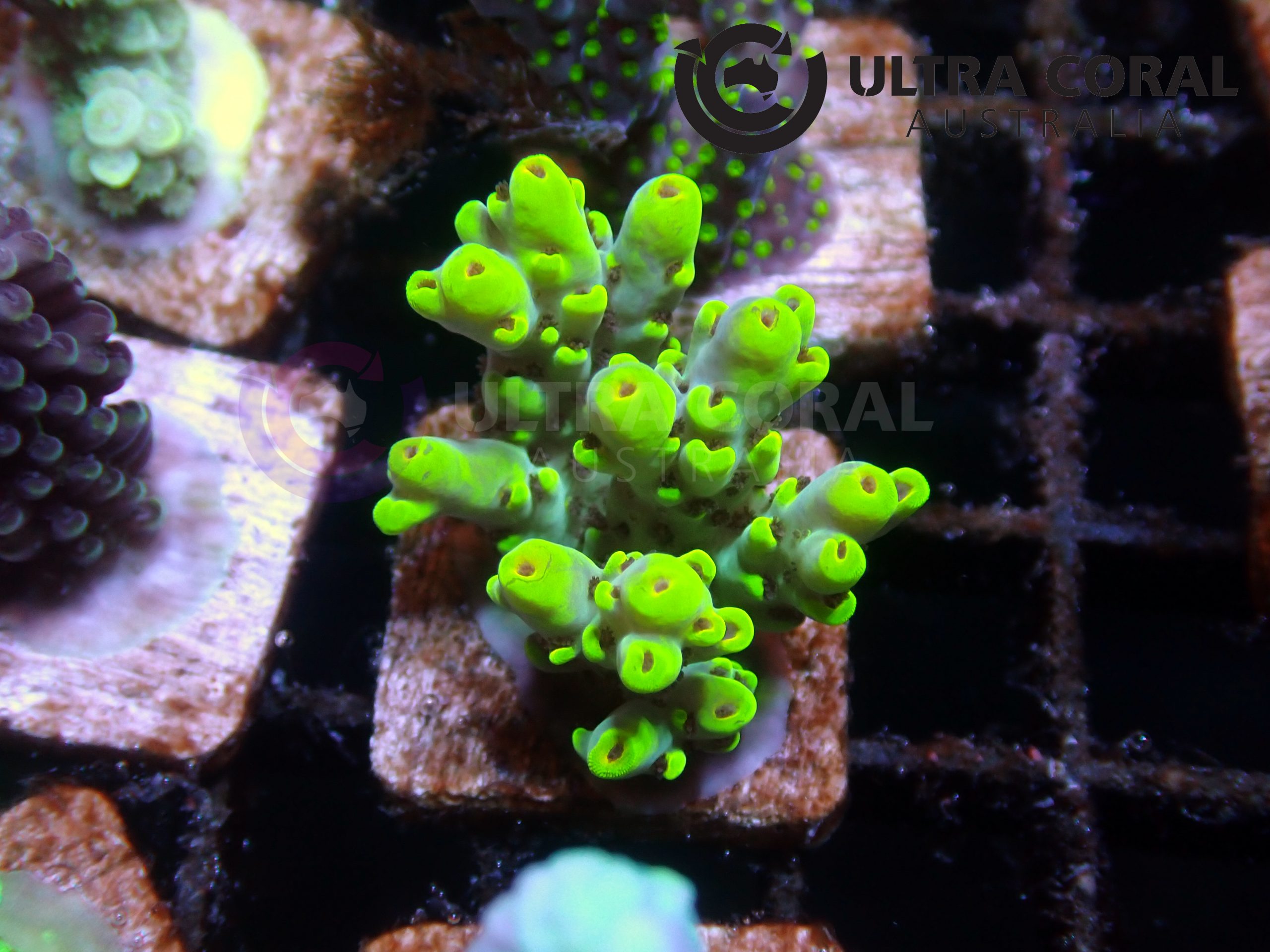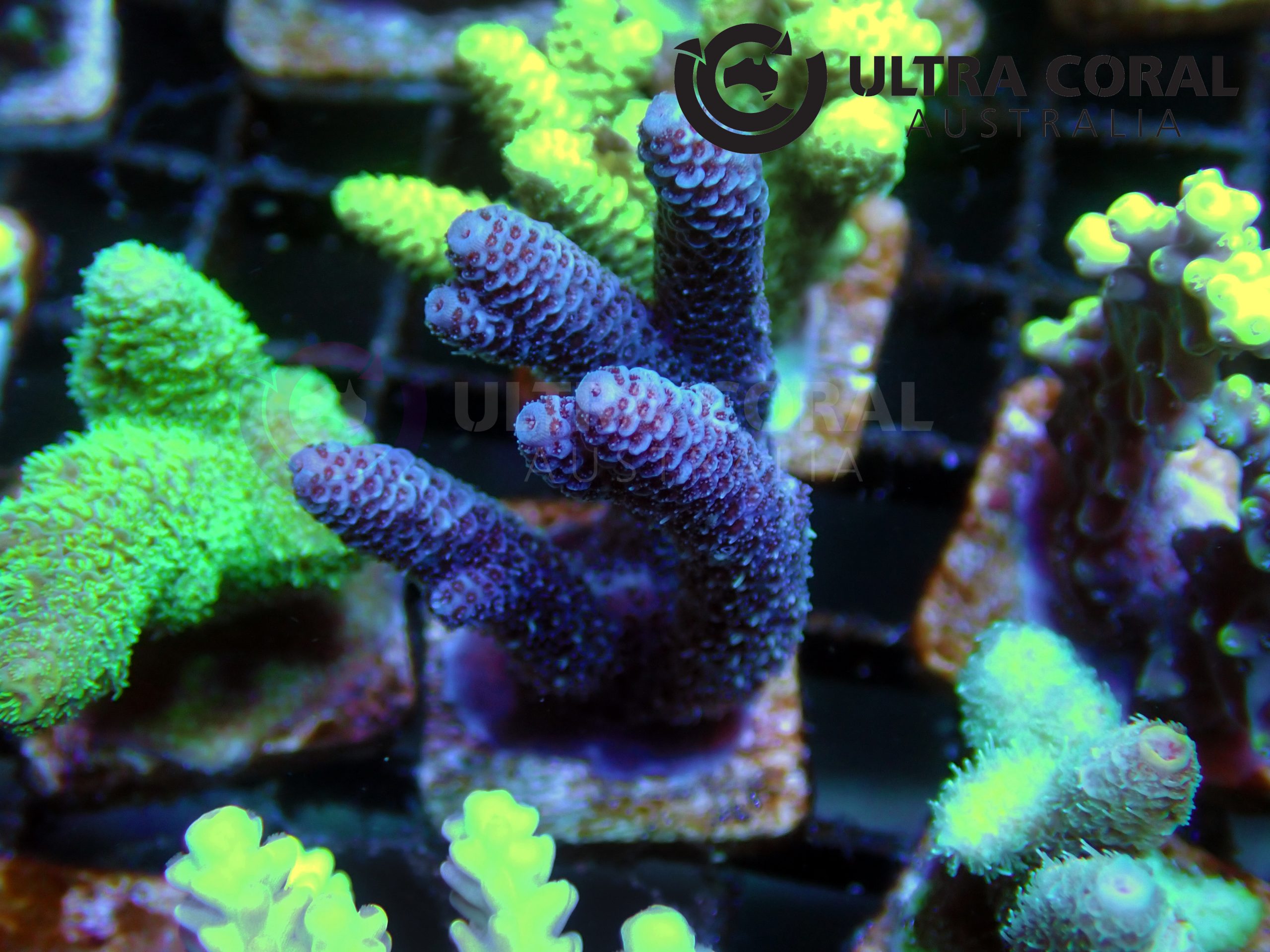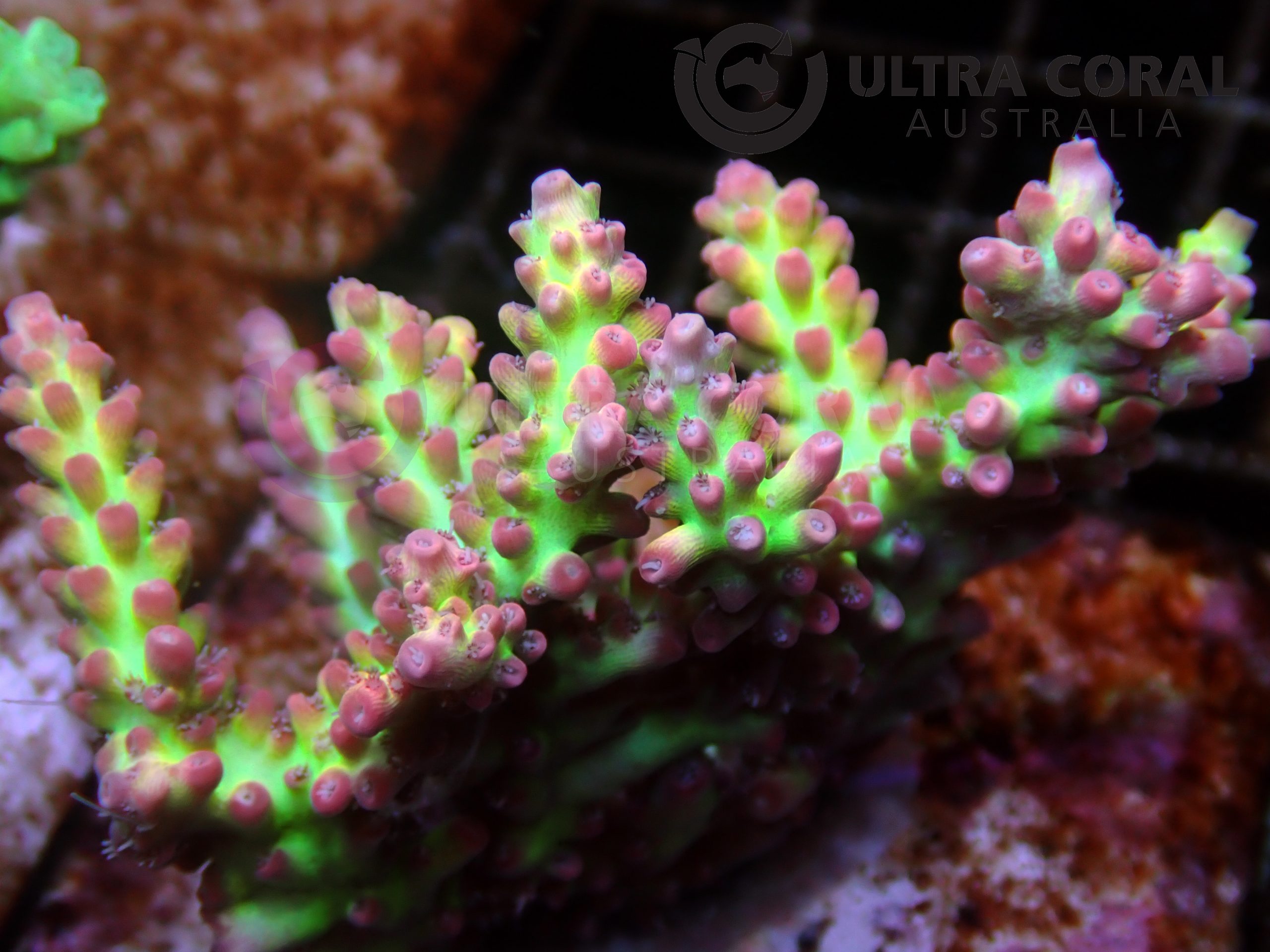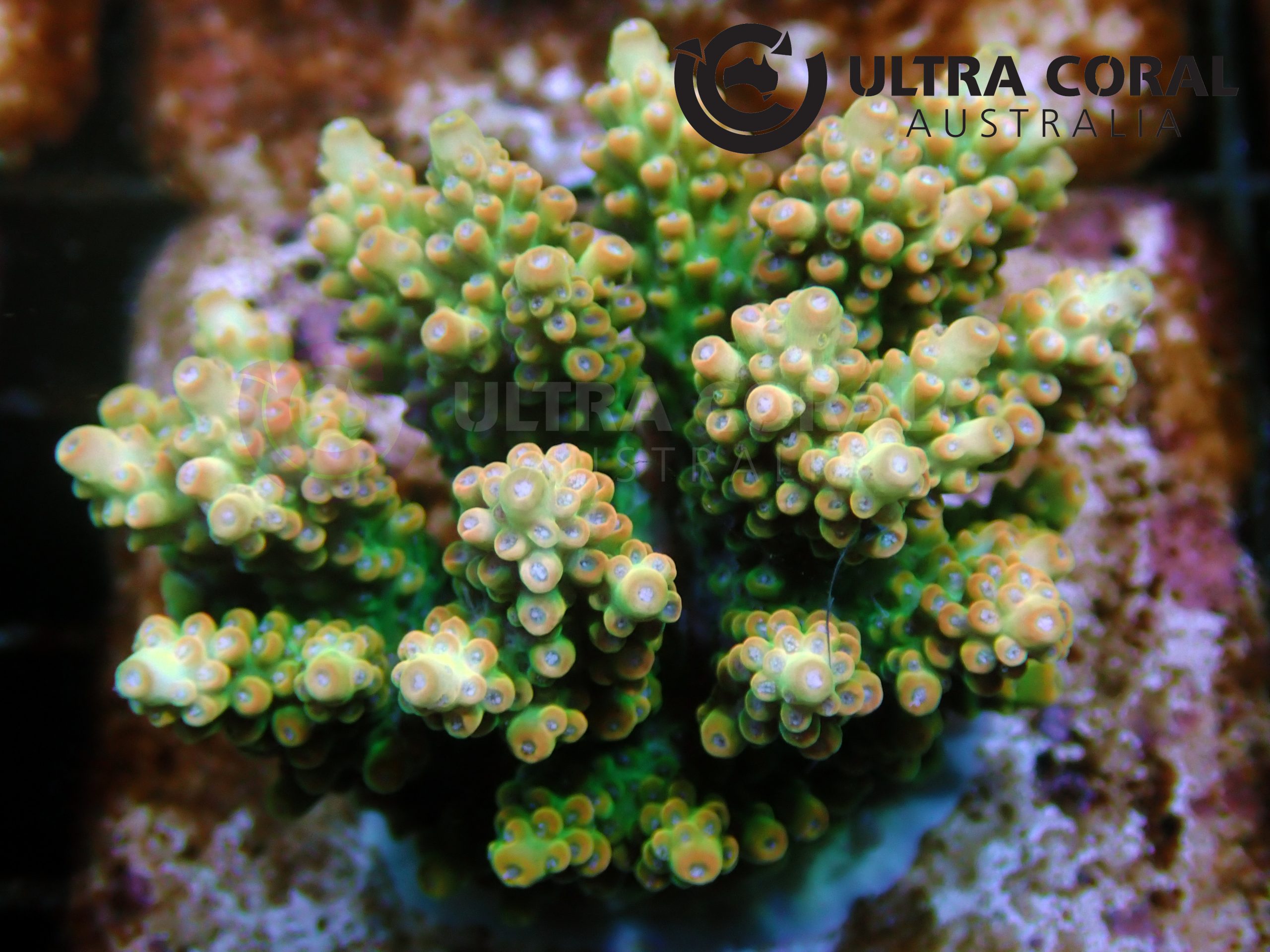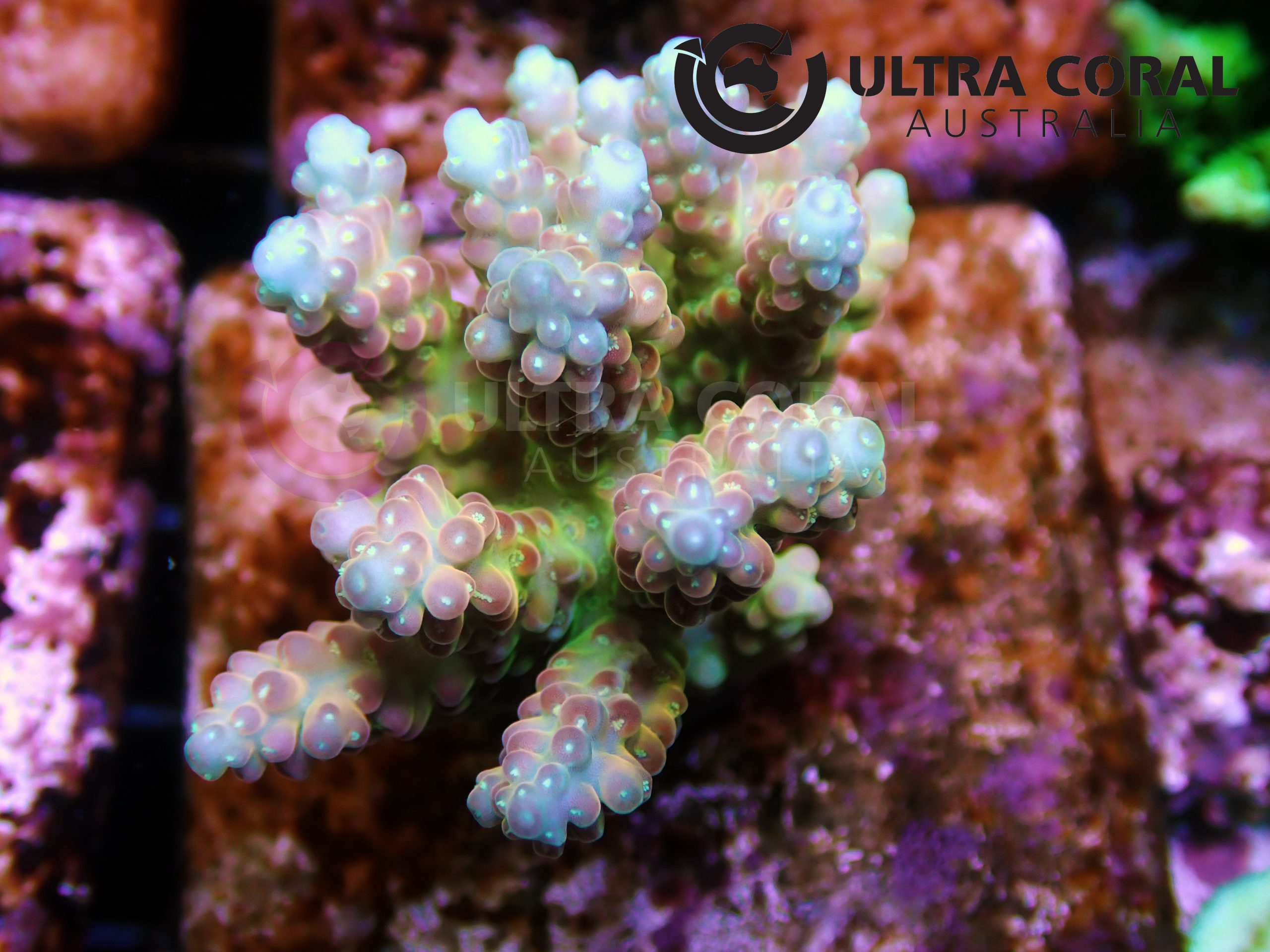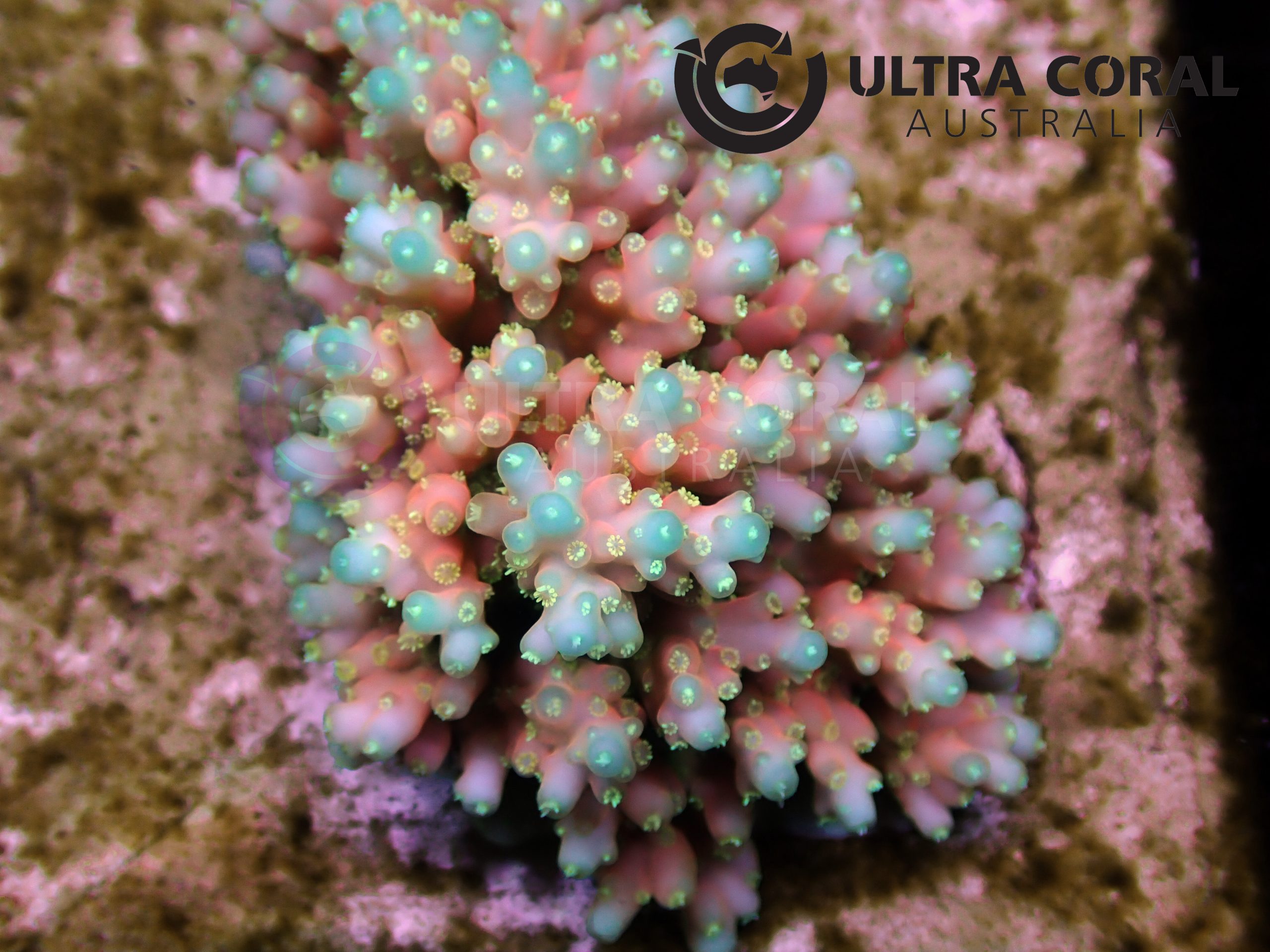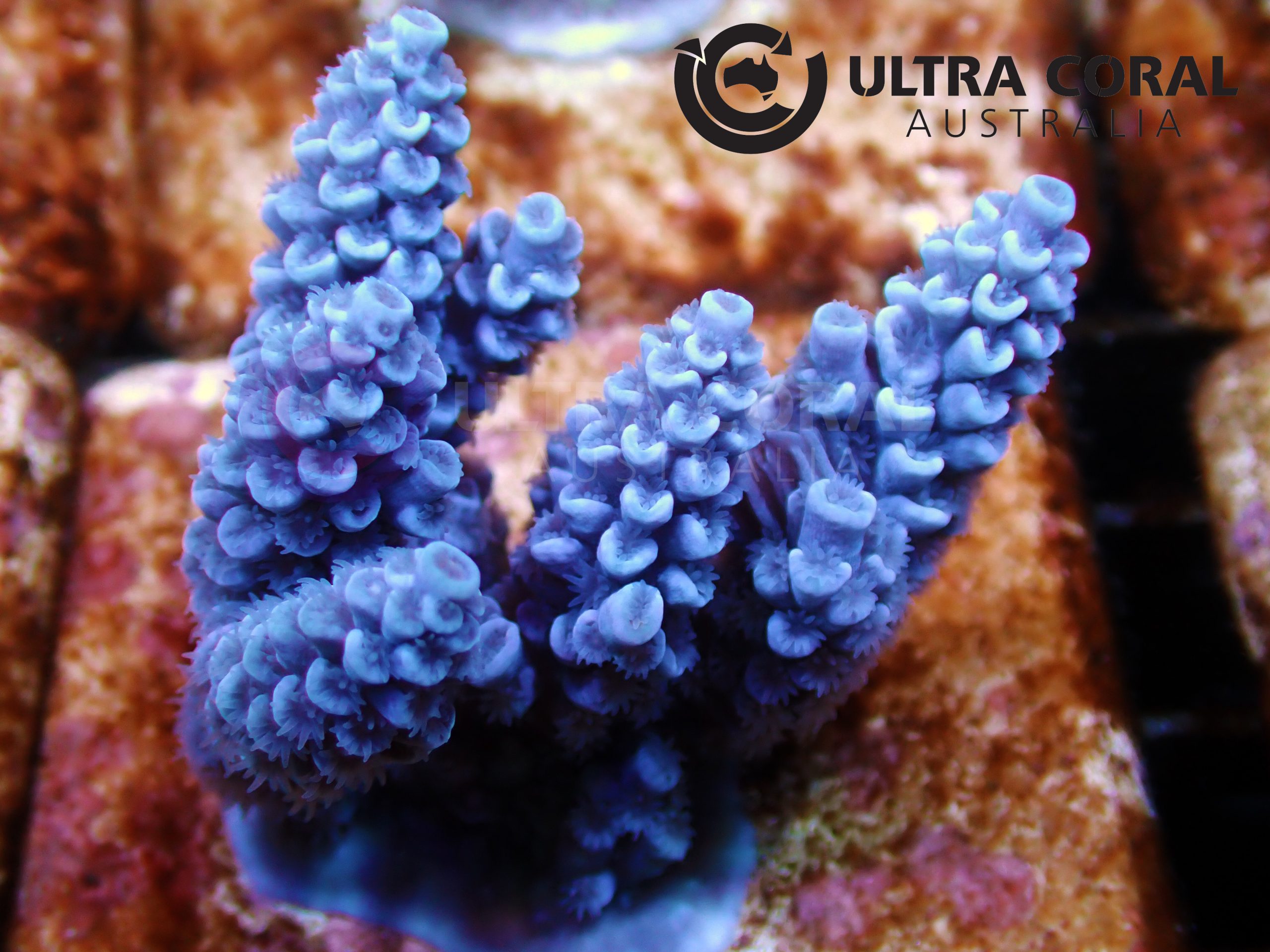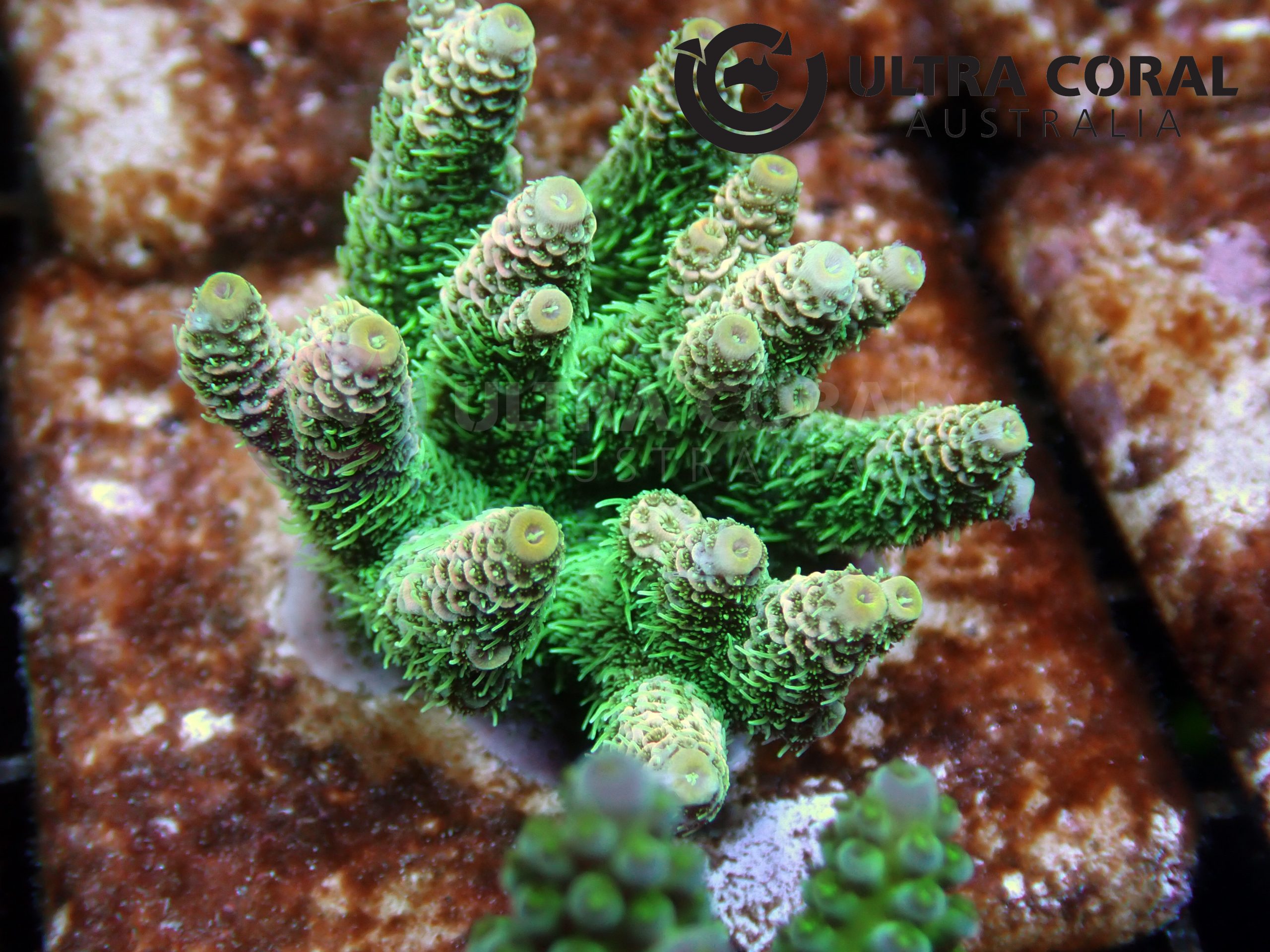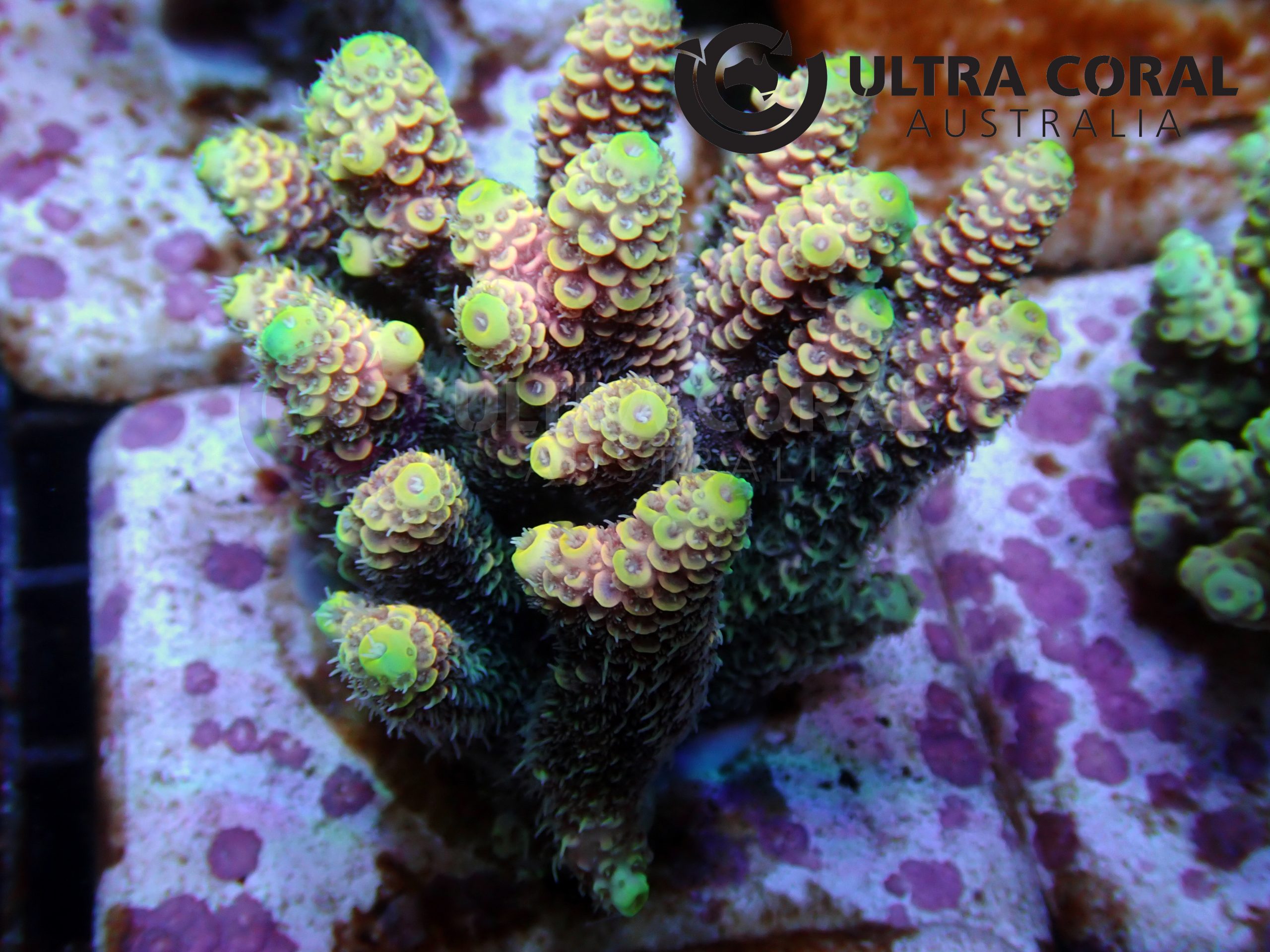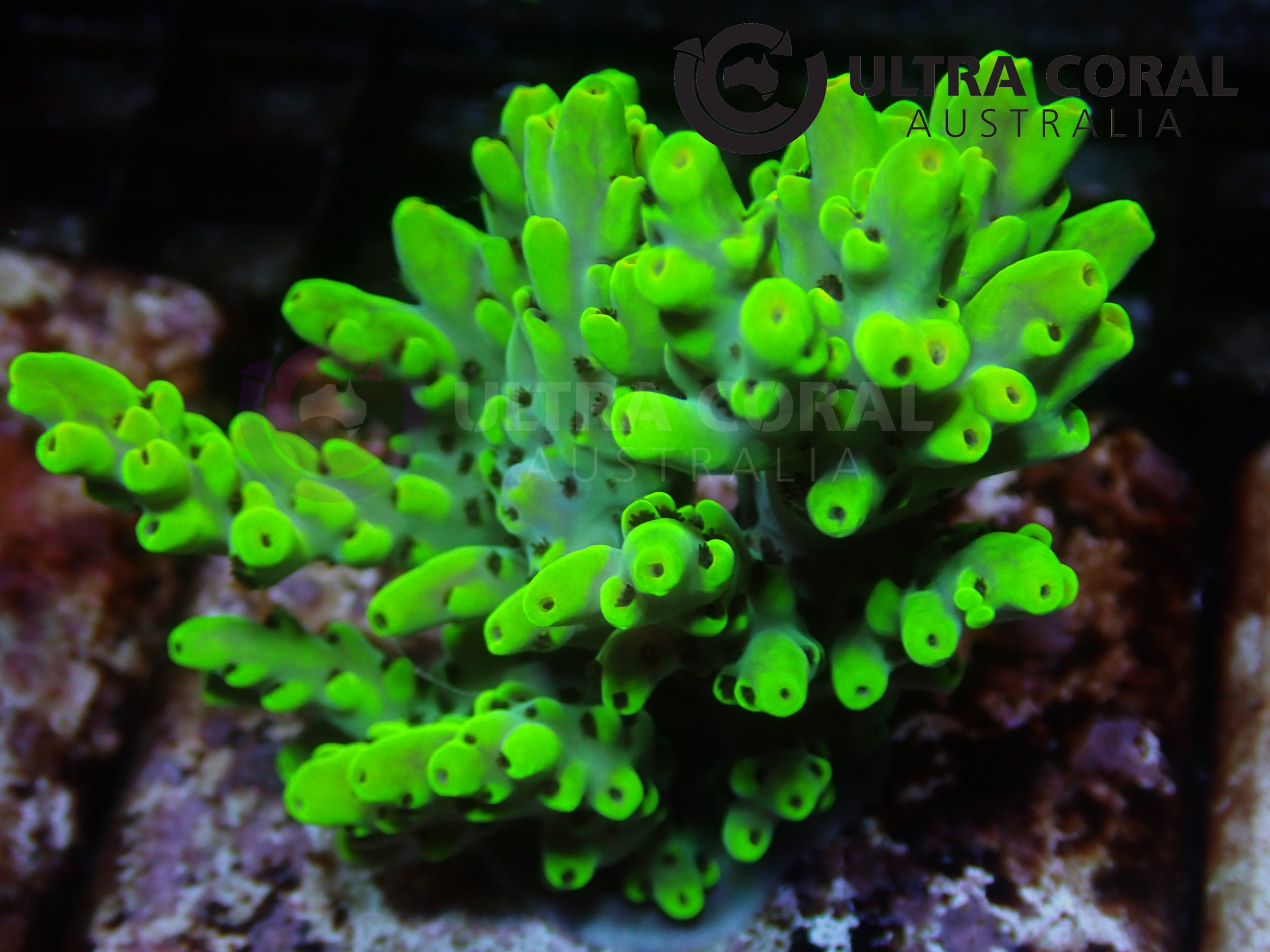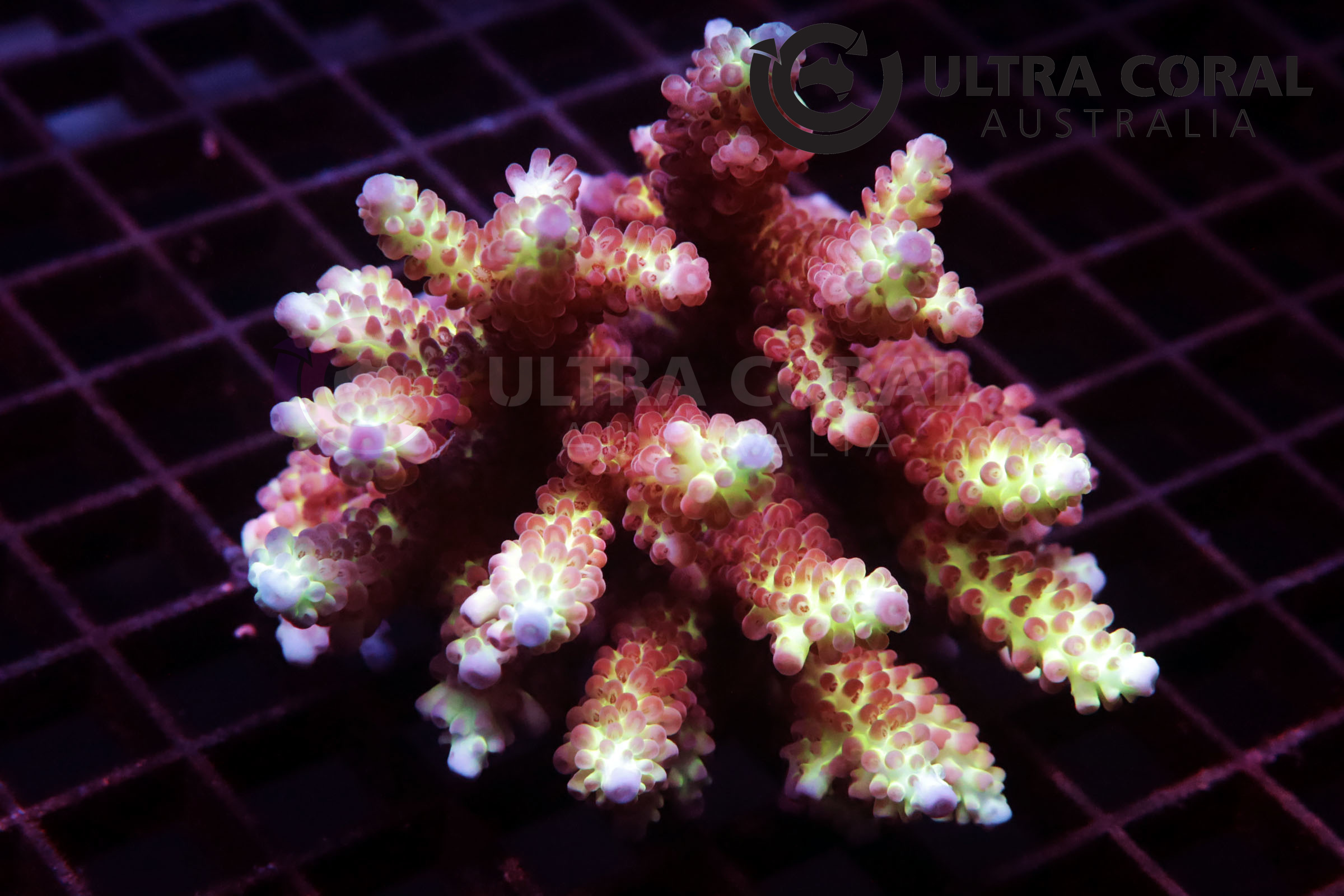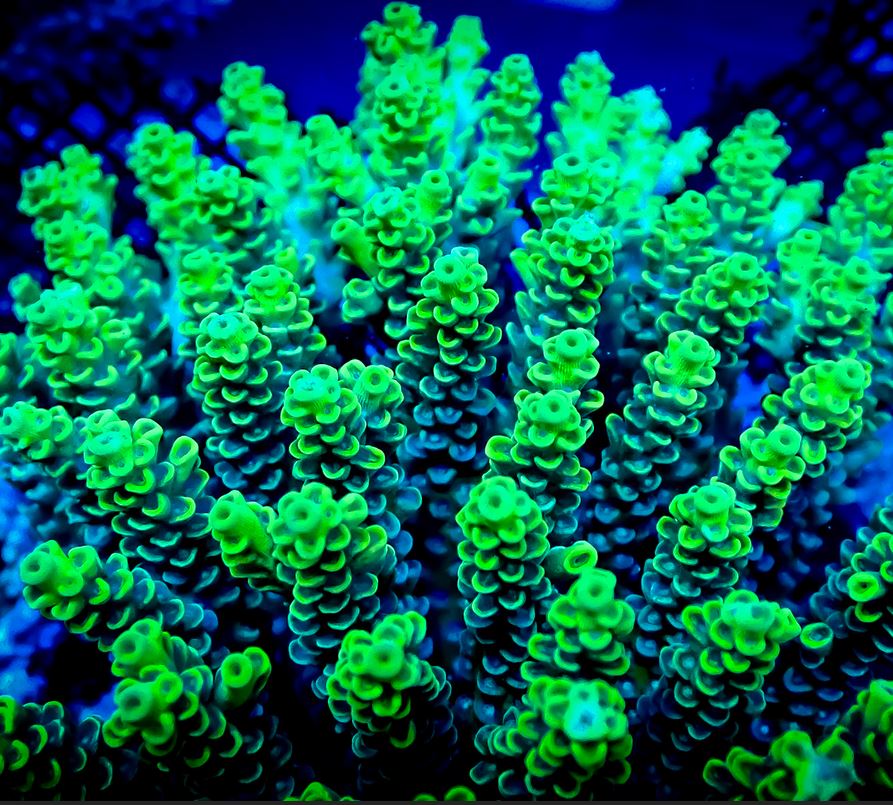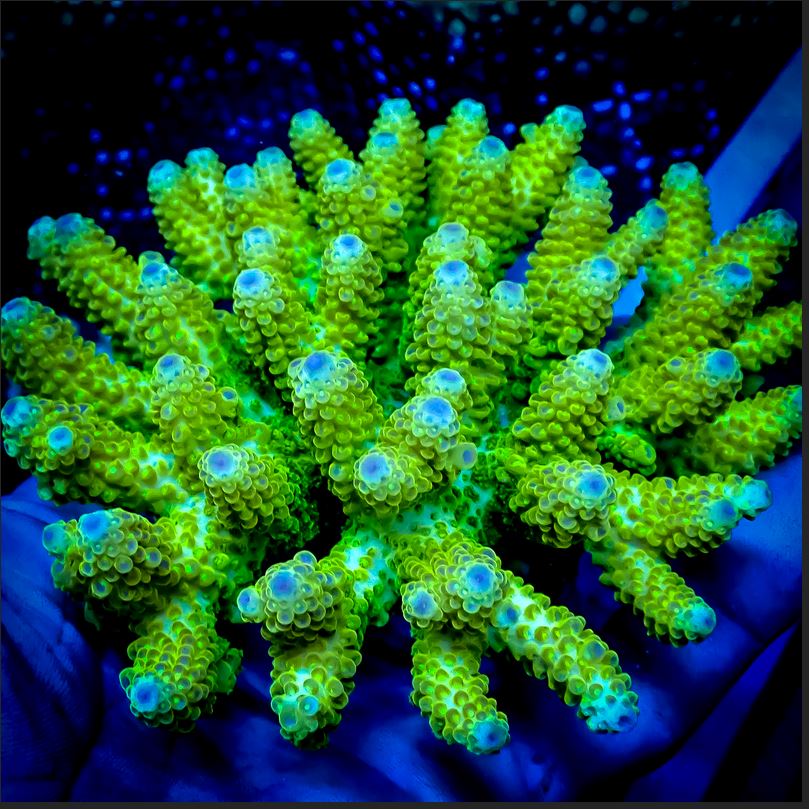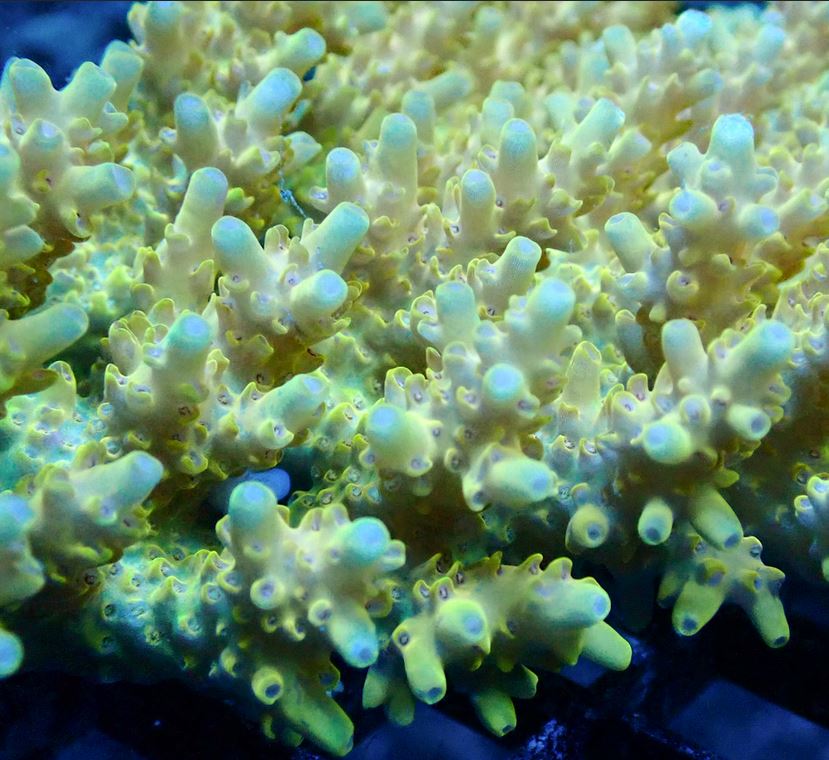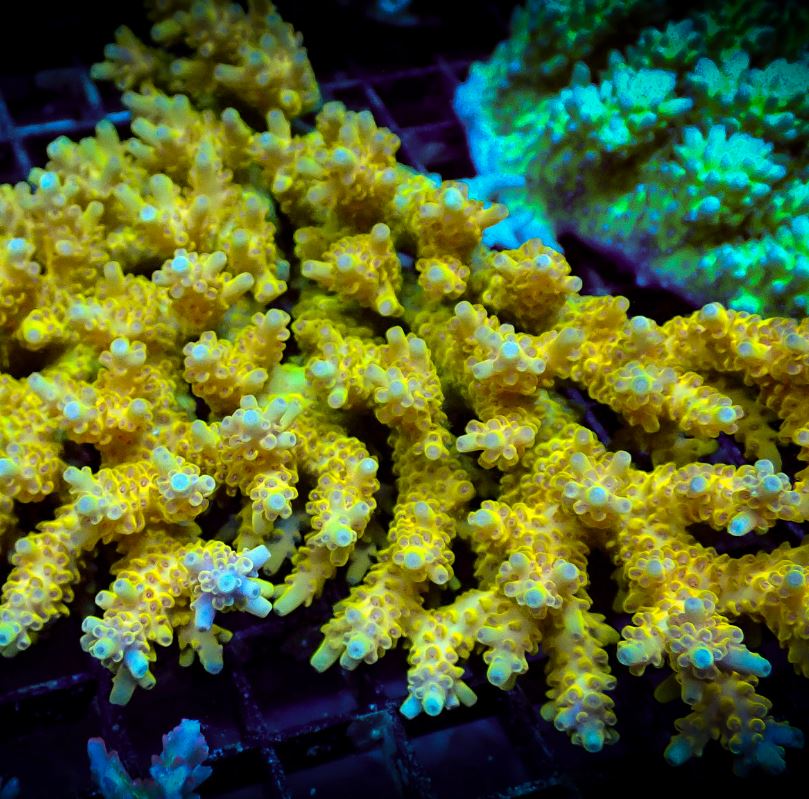Acropora sp.

Acropora is by far the most common contributor to our tropical coral reefs, with 149 species known to date.
They are also highly sought after by reef tank hobbyists, commonly titled the ?crown jewel of the SPS world? due to their intense colouration and remarkable growth rates.
Acropora species are small polyp stony (SPS) corals, consisting of corallites around 2mm in size. They are found most abundantly in shallow tropical waters, where they house an array of marine life.
Acropora species display the widest range of growth forms than any other coral genus, including stubby branches, elegant tables, giant plates, feathery spirals and less commonly, massive growth formations.
They are most commonly found as branching corals, exhibiting axial and radial polyps.
Acropora colonies can display in almost any hue of the rainbow, with light-coloured branch tips where growth is occurring.
Unlike the more forgiving large polyp stony (LPS) corals, Acropora are sensitive to water chemistry variations and are likely to show their irritation by either changing to less desirable colours, or quickly dying. It is for this reason they are also known as one of the most challenging yet rewarding coral aquarium species.?
Basic Water Parameters
pH
8.0 to 8.3
Salinity
34 - 36ppt
Temperature
24.0 - 26.0 Celsius
Husbandry Requirements
Lighiting
180+ PAR
Flow
High supplemental turbulence required
Aggressiveness
Limited ability to damage other corals
Acclimation Guide
- It is highly recommended to acclimate all corals to a new environment to prevent shocking corals.
- Place the corals in the water from the packing bags and slowly add the water from new environment (Dripping method is recommended).
- Use the water parameter above as a guide.
- When the vessel becomes full , replace the water with the new environment water by a small amount at a time.
- Ensure the water temperature matches with the new environment’s water.
- After the corals have spent adequate time in the acclimation water, gently place the corals to a new environment.
- It is recommended to place new corals under lower light intensity than usually required. Once corals show no signs of stress, it can be moved to higher lighting area gradually.”

